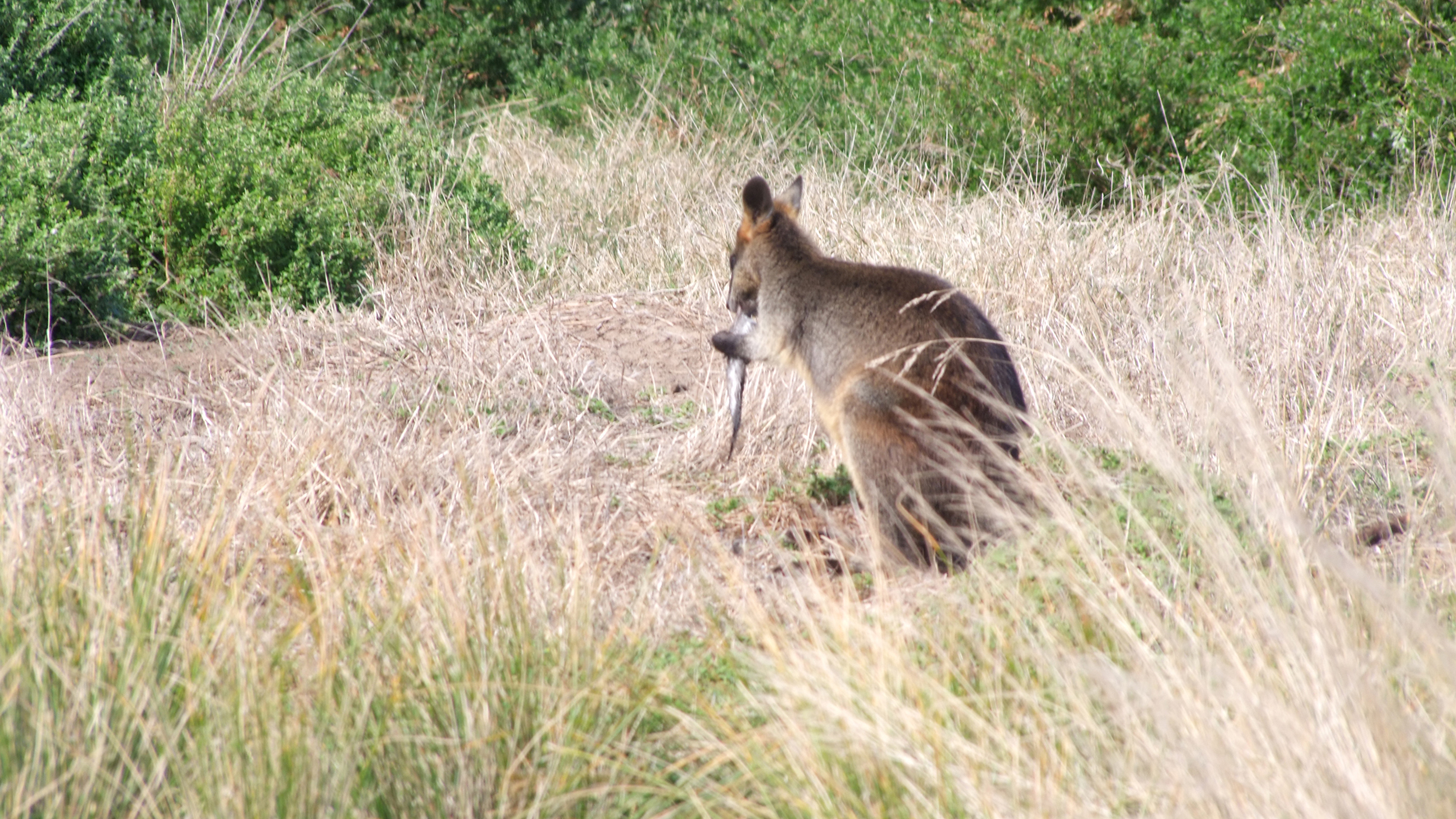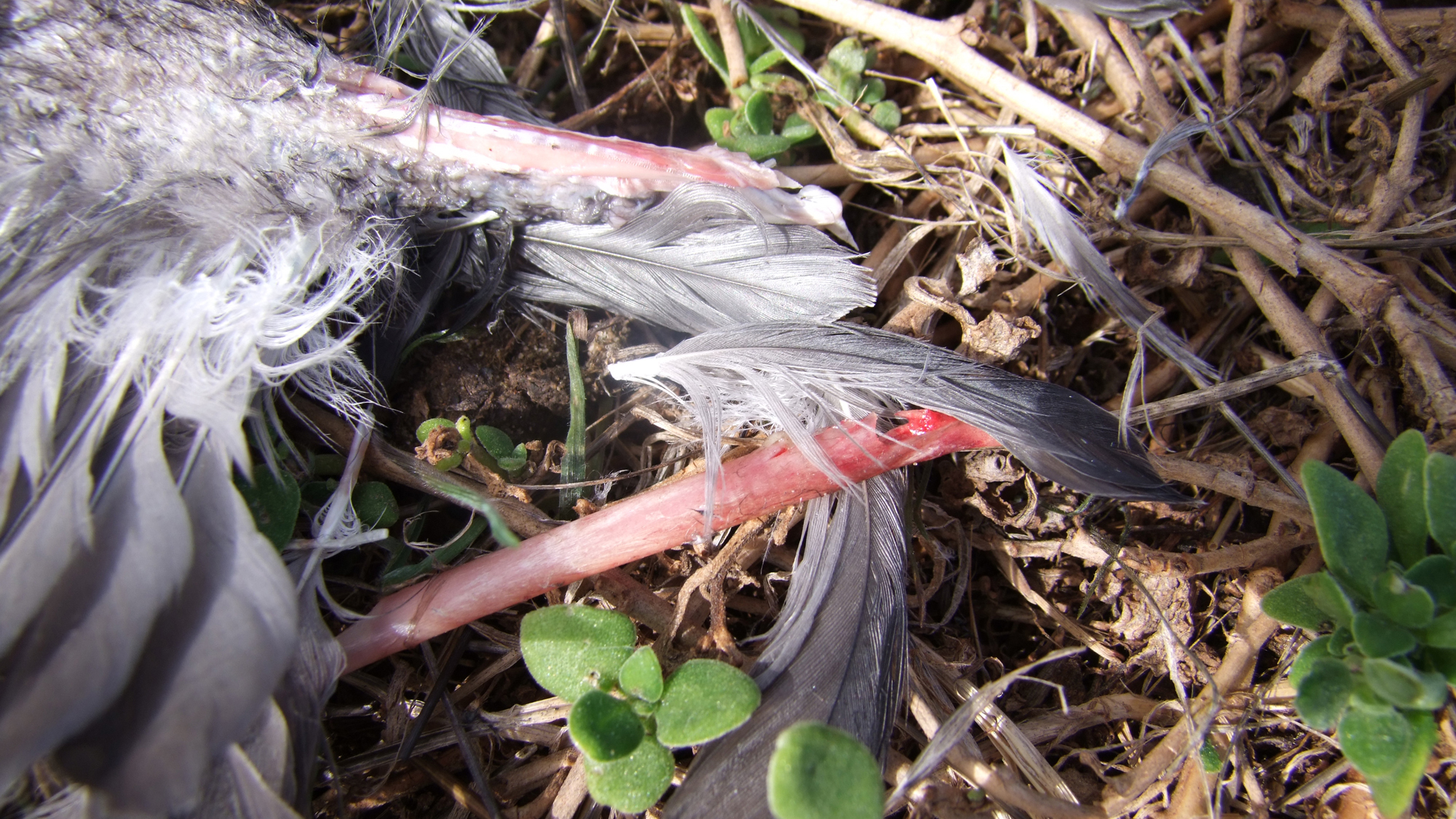How can you make a wallaby less cuddly? Give it a dead seabird wing to chew on.
Wallabies are various types of medium to large-sized marsupials found in Australia and New Guinea. They’re in the same family as kangaroos — macropods — but the term “kangaroo” is usually reserved for the 6 largest species in the family. Wallabies make up the bulk of the group, which also includes tree-kangaroos, rock-wallabies, and the quokka.
The swamp wallaby (Wallabia bicolor) is a stocky wallaby found along the entire eastern edge of Australia. Like other wallaby species it’s a herbivore, grazing on a wide variety of plants, including species that are often poisonous to other animals, like hemlock and lantana.
But the swamp wallaby isn’t always a strict herbivore.
In 2013, James Fitzsimons, the Conservancy’s director of conservation in Australia, was driving down a road on Phillip Island, just a couple hours southeast of Melbourne. “We saw this wallaby in a patch of tussock grassland, standing upright holding something in two paws, something quite large,” Fitzsimons said.
He pulled the car over, got out his camera and binoculars, and started taking photos. Fitzsimons quickly realized that the wallaby was holding — and chewing on — the wing of a short-tailed shearwater, a common seabird on the island. “I knew it was a significant observation,” he said, “so I kept taking shots and trying to get closer.”
Fitzsimons watched the wallaby eat for about three minutes, until a passing car startled the animal and it hopped off into the bush. He then walked over to inspect the wing. “It was obvious at that stage the wallaby had chewed into the marrow and the flesh,” says Fitzsimons. “It was quite unusual.”

Reported in Australian Mammalogy in 2016, Fitzsimons’ observation is the first detailed recorded observation of a swamp wallaby eating carrion. “Larger macropods, like this swamp wallaby, are observed frequently and lots of study is done on them,” says Fitzsimons. “But this behavior hasn’t been recorded before, so I suspect it’s quite rare.”
Though rare, there are documented reports of other generalist macropods eating carrion: In 2013 a western grey kangaroo was filmed eating a dead seabird on the beach in Western Australia. Several tree kangaroo species are reported to eat birds and reptiles in captivity.
The bird in question — a short-tailed shearwater — is common on Phillip Island, where it nests in large breeding colonies. Observers reported a high number of shearwater deaths in the area in 2013, providing this adventurous wallaby a chance to expand its diet.
“It was in a pretty lush area, so the wallaby had ample opportunity for more typical browse,” says Fitzsimons. “It was just taking advantage of a different and perhaps unique source of protein.”

So it turns out that the swamp wallaby is a bit more of an “opportunistic” feeder than previously known. All of which makes for an excellent field sighting.
Calling all ecologists and naturalists: If you’ve observed any large macropods eating carrion, please share information about your sighting with us in the comments below or email James Fitzsimons directly at jfitzsimons [at] tnc.org.




I watched a Bennetts wallaby eating a discarded fried chicken carcase at Wineglass Bay in Freycinet National Park, Tasmania, in the 1980s. I’ve never forgotten it because it was so unusual and unexpected.
As a wildlife carer we provide bones for swampies to crunch on in their enclosure. . We personally have quite a few photos from our wildlife cameras on ” scavenger hill” where we leave euthanaised animals with swampys frequenting and at least eating the bones.
Hand raised agile wallaby joey sharing a large aviary in the NT was seen killing and eating quail. Ate at least 4 before we removed her.
Hi – I have observed a Western Grey Kangaroo eat leftovers of a barbecue chicken in Dwellingup, Western Australia. We had left in on a picnic bench overnight and I was woken during the night after the roo had knocked it off and was eating the chicken and a loaf of bread. Perhaps more scavenging behaviour. cheers Ry